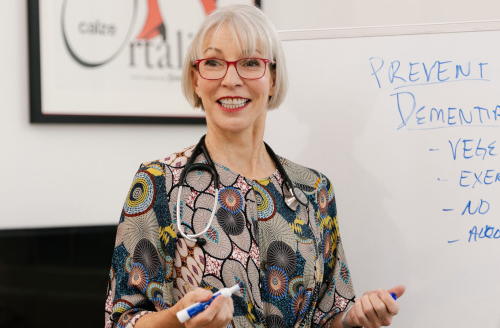The emergence of digital technologies enables health providers to treat patients virtually, making access to healthcare more equitable than ever before. But even as the world embraces tech, older populations may not experience as seamless a transition to virtual care as their young counterparts. Let’s discuss four strategies providers can employ to make telehealth for seniors work .
Telehealth for Seniors: Transition Strategies
Pre-Appointment Education
It’s crucial to clearly and “accessibly” walk seniors through the telehealth process to ensure they understand how to get online. The following are a few ideas for pre-appointment process that can make the whole thing go more smoothly.
Define telehealth. Older patients may not be familiar with telehealth. Breaking down the process allows questions to be answered and avoids confusion, making everyone feel comfortable and ready for their appointment.
Identify the Basics. Provide a checklist of items needed before the appointment for a seamless telehealth visit. This list should include access to the internet, a charged device for video calling, and any applicable insurance verification or documents.
Remember Empathy. As telehealth’s prominence grows, so does a need to appropriately serve populations illiterate in technology. Being an empathetic healthcare provider means employing patience and flexibility to the needs of seniors as they learn to navigate the virtual world. Look at the world from the perspective of what they need, and not what you need.
Explain The Benefits
Telehealth for seniors only works if there’s a good reason to participate. After all, breaking the cycle of in-person visits is no easy feat. However, engagement will increase by calling out objections and highlighting what one can gain from telehealth. These benefits include:
- Lessens the likelihood of a cold, flu, or COVID-19 infection
- Reduces travel and saves money
- Great for consultations, preventative care, and non-urgent ailments
- Allows for certain parts of the care team to be in geographically different areas – for example adding a remote geriatrician to a local care team to bring in important expertise (like what we offer at Dr Liz Geriatrics)
Leverage Technology
We often view technology as being a barrier to communication, particularly when elders are involved. Flip that on its head and realize that technology is the enabler of communication between elders and their care team. There are enormous market forces worth hundreds of billions of dollars that are driving these technologies towards improved usability and friendliness. Covid drove a sudden spike in use, and it was rough in places. The industry has had two years of working on the products, and they’ve come a long way.
Enlist Help from A Caregiver
Telehealth is about making access to healthcare equitable — not more difficult. Ask if patients have a family member or hired help to assist with electronic devices and internet access. The first appointment is the most difficult, and once over that hump, it can become much easier. There are also models of care where there’s only a few telehealth visits with a remote expert, like a geriatrician. This is particularly helpful for people who are in rural and other areas that might have a family care doctor as their primary care physician.
Telehealth care depends on the elder to be able to clearly see and hear the person on the other end of the line. Don’t forget to address any impairments that may hinder quality care, such as hearing, vision, and mobility.
Dr Liz Geriatrics
Do you know a senior who would benefit from telehealth but is not embracing it? Dr Liz Geriatrics can help. We work with seniors, caregivers, and doctors to develop education and health plans that enhance communication and care for all. Contact us today at 650-357-8834 x1 and see what we can do for you.

Elizabeth (Dr Liz) has over twenty years of experience in providing medical care to the elders. She is board-certified in Internal Medicine, Geriatric Medicine and Palliative Care Medicine. Dr Landsverk founded ElderConsult Geriatric Medicine, a house calls practice, to address the challenging medical and behavioral issues often facing older patients and their families.

